Active Education Posts

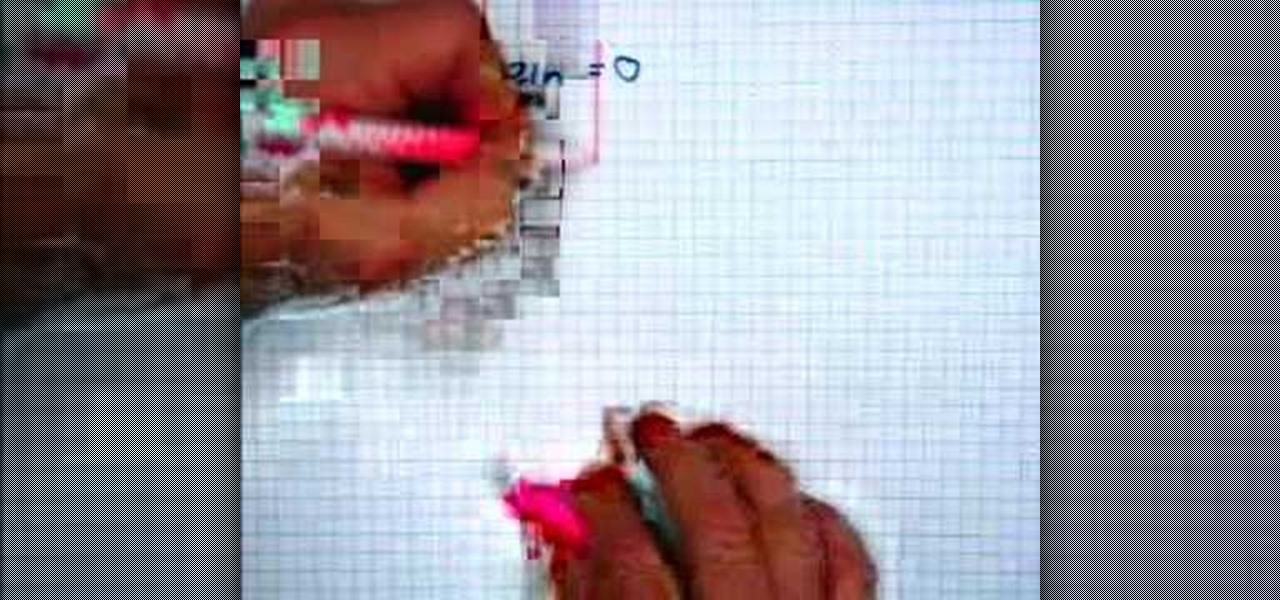
How To: Solve multi-step equations
In this video the instructor shows how to solve multi-step equations. In a multi-step equation, the equals to sign divides the two sides of the problem. To solve this kind of problem, the first thing

How To: Make a Double Heart-Shaped Homopolar Motor: The Valentine's Day Gift of Science!
Homopolar motors tend to be typecast as simplistic in nature, and that's true for the most part. The bare minimum requirements are a battery, conductor, and magnetic field, but when it comes to Valentine's Day, they're nothing short of complex.
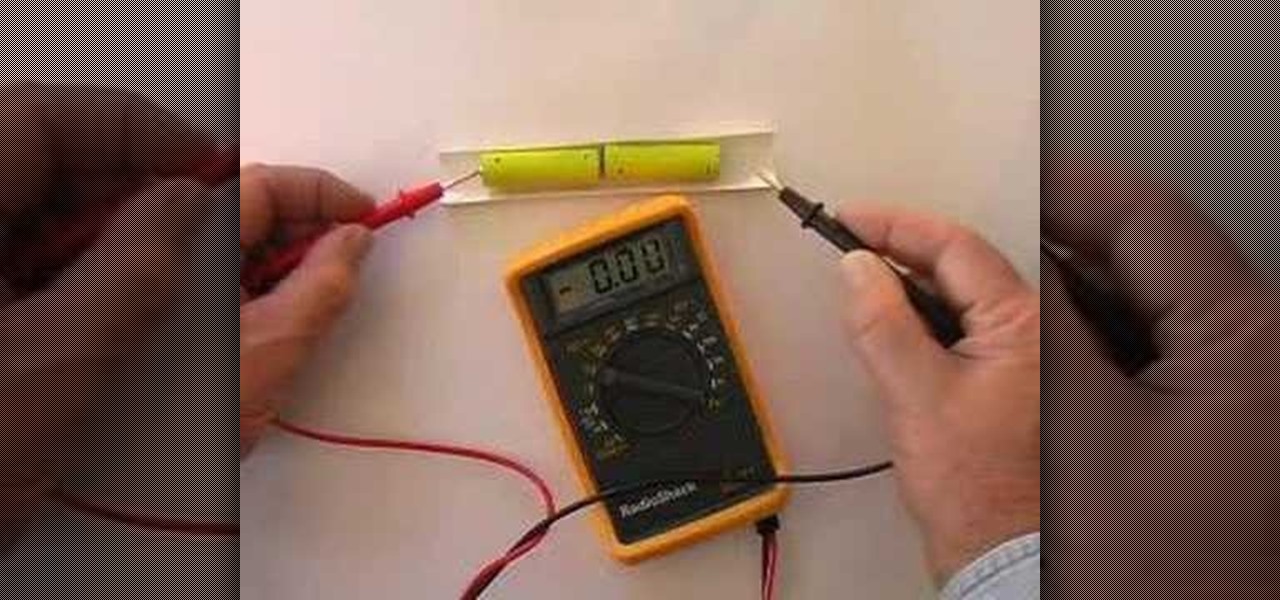
How To: Construct a vinegar battery and power a calculator
Using only vinegar and a few simple materials, it is possible to construct a working battery. This science video tutorial explains how to construct and use a battery like this to power a calculator. A good science project as part of an introductory electricity course. This project can be used as a science fair project or merely for fun. If you've ever wanted to make your own battery, know is the time, this science experiment will show you how.

How To: Build yourself a slide rule
Nate, the Mathematics Guy shows you the basics of a slide rule. He explains what a slide rule is and how you can build one of your very own!
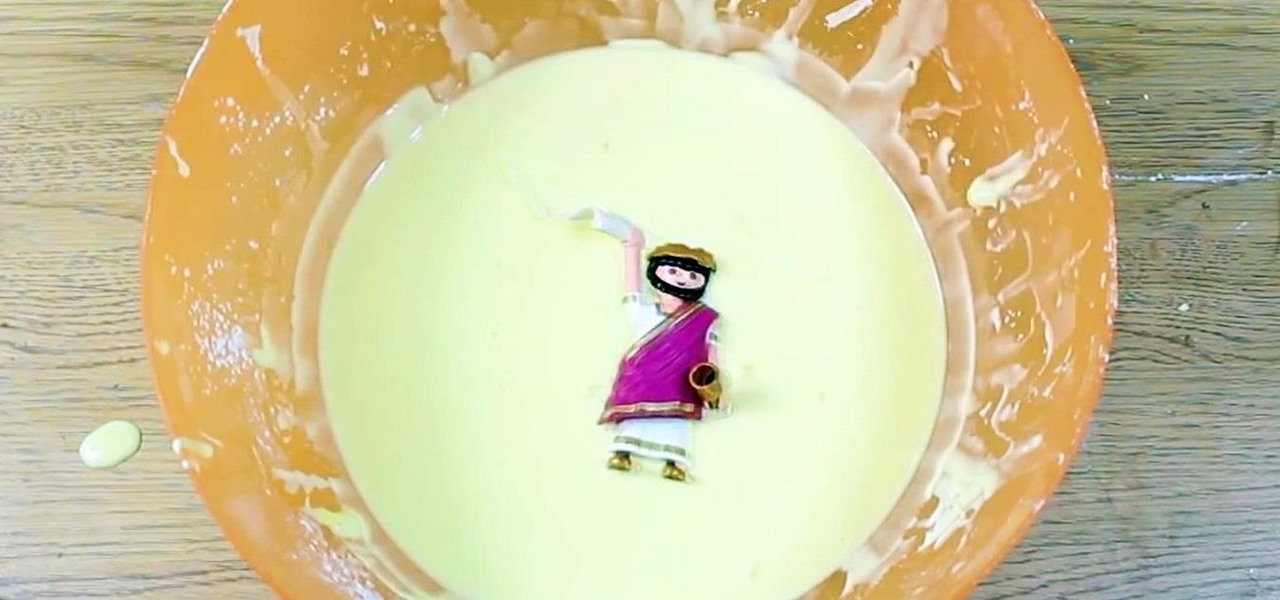
How To: Make Quicksand at Home Using Cornstarch & Water
Creating awesomely messy slops of DIY slime and curdled fake blood isn't something new—we even have guides on making Dr. Seuss-friendly Oobleck and the radioactive green ooze that created my childhood favorite Teenage Mutant Ninja Turtles (minus the radioactive part, of course).
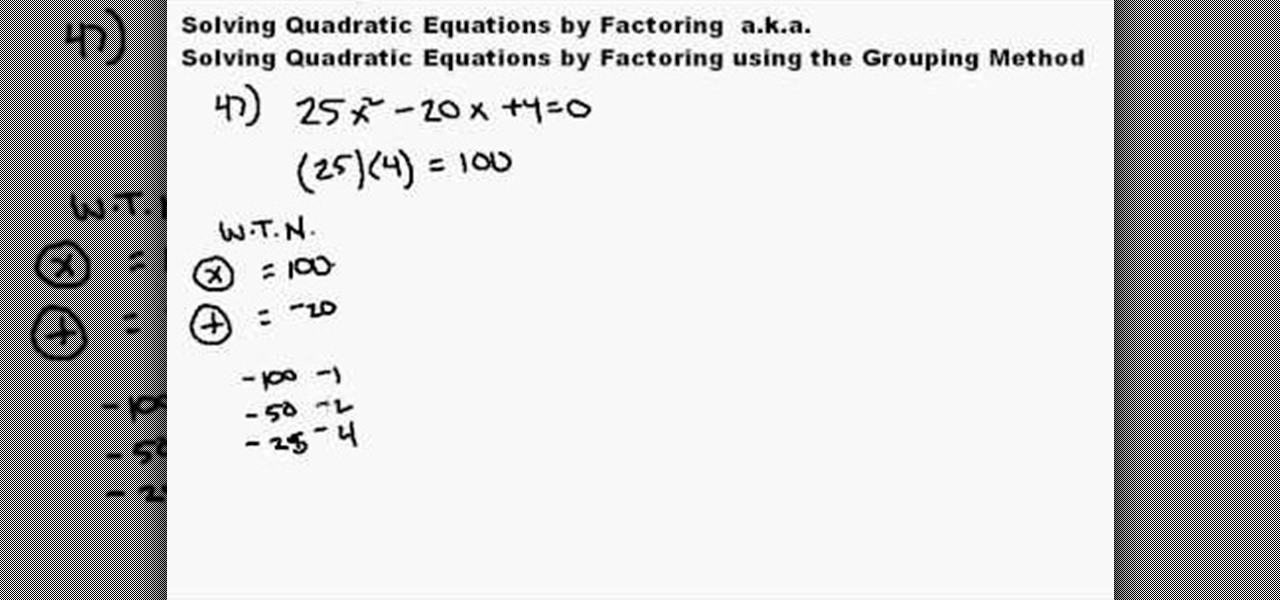
How To: Solve quadratic equations by factoring using grouping
Learn how to take a quadratic equation in standard form and change the trinomial into a binomial product. Using the zero product rule, the zeros of the graph can then be found. The grouping method is effective when the leading coefficient (the number factor of the squared term) is some number other than 1 (one). From Ramanujan to calculus co-creator Gottfried Leibniz, many of the world's best and brightest mathematical minds have belonged to autodidacts. And, thanks to the Internet, it's easi...
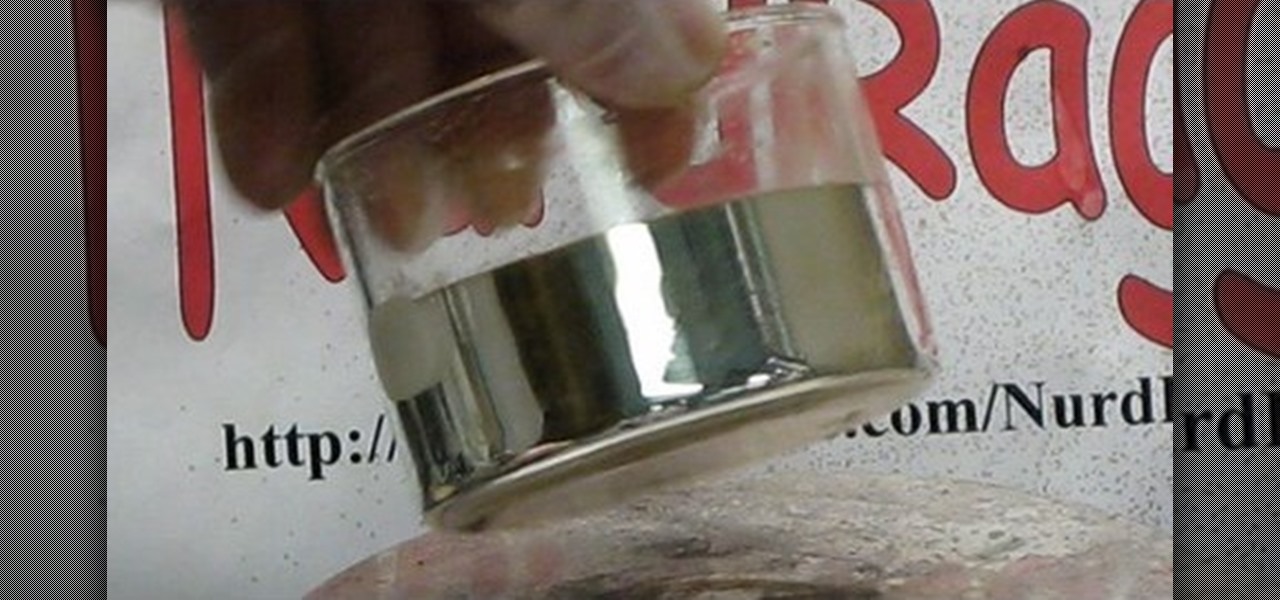
How To: Make glass mirrors with silver nitrate
Watch this science video tutorial from Nurd Rage on how to make a mirror silvering solution from silver nitrate, ammonia, sugar, and sodium hydroxide.

How To: Make an Alternative Way to Cook Food
There is always an easier way to do something whether you want to clean, organize, freshen the smell, get water into a bucket that won't fit in your sink. The same principle applies when cooking. Sure you could cook food in an oven, microwave it, boil it, fry it, cook it with a solar cooker, but there is an easier and inexpensive method.

How To: Find the value of a variable in an algebraic equation
Need help figuring out how to solve simple algebraic equations? Learn how with this free video lesson. From Ramanujan to calculus co-creator Gottfried Leibniz, many of the world's best and brightest mathematical minds have belonged to autodidacts. And, thanks to the Internet, it's easier than ever to follow in their footsteps (or just finish your homework or study for that next big test).

How To: Reduce Static Electricity
Static electricity might seem like magic but you don't have to be a wizard to get rid of it. There are simple steps you can take to reduce the amount of static electricity in the air or on you by using some items you probably have at home.
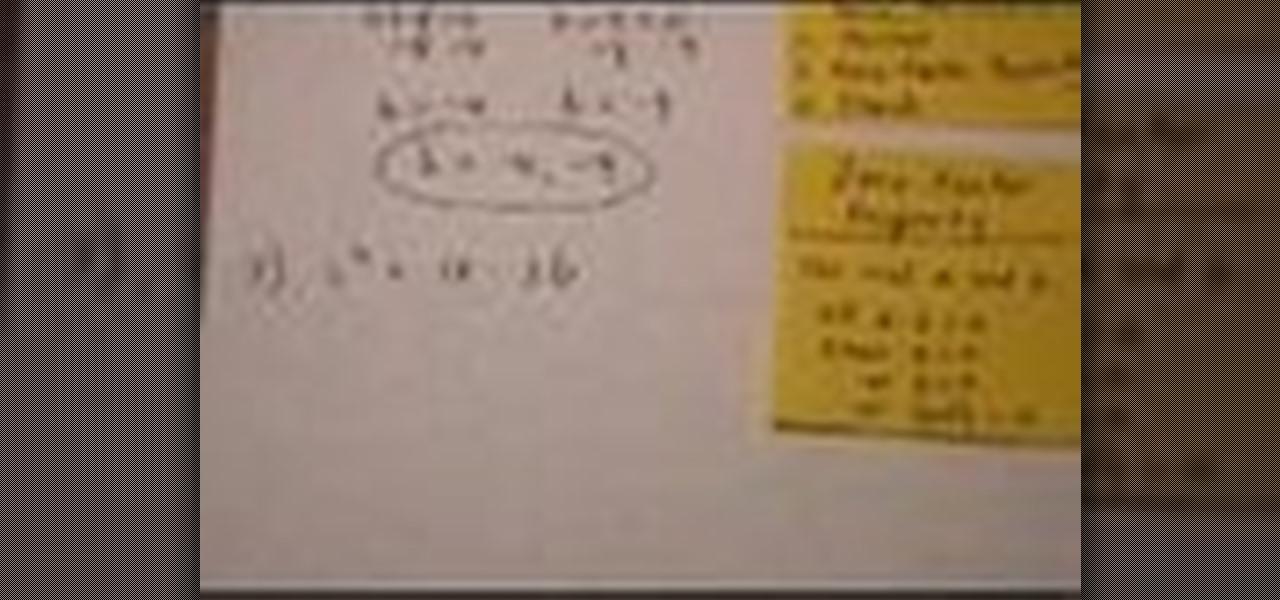
How To: Solve quadratic equations by factoring in math
In this video the instructor shows how to solve quadratic equations by factoring. You can solve a quadratic equation by factoring them. To do this first write the equation in the standard from which is a*x*x + b*x + c = 0. Now factor the equation into two smaller equations of single degree. Now you can apply the zero-factor property to solve the equation in this from. The zero-factor property states that for a real values a and b, if a multiplied by b is equal to zero then value of a must be ...
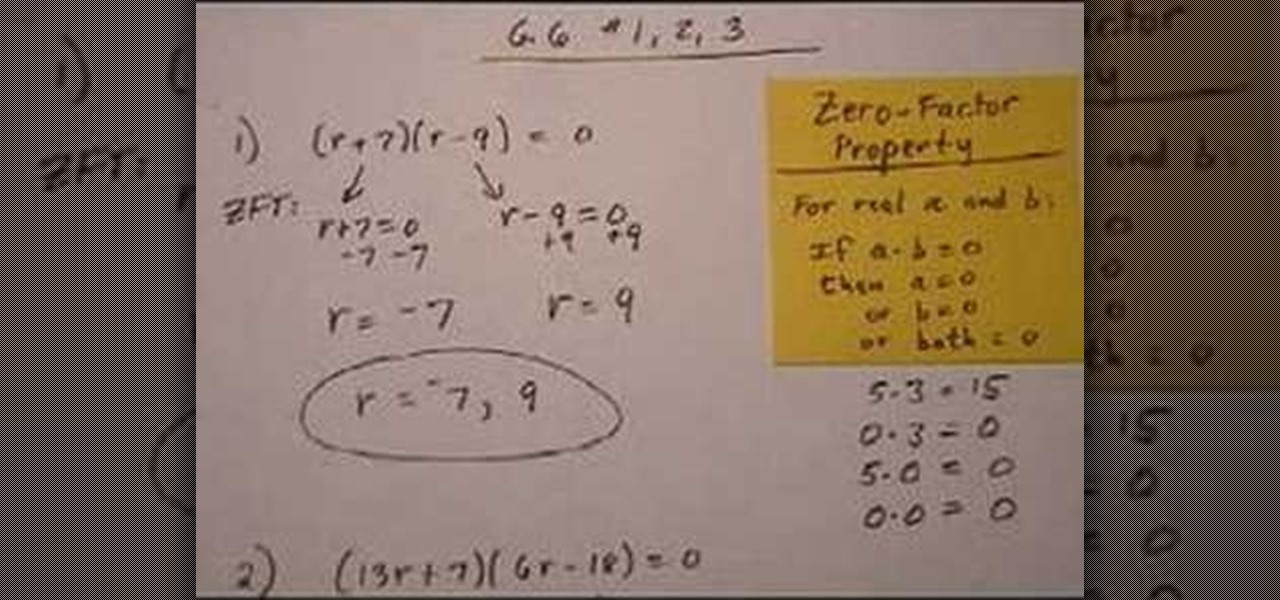
How To: Solve quadratic equations by factoring
This is a great educational video on how to solve quadratic equations by factoring. Let us take an example and try to learn the method. Here is a quadratic equation: (r+7) (r-9) = 0. Consider zero-factor property. For real a and b, if a.b = 0, then a = 0 or b = 0 or both are equal to zero. So r+7 = 0 or r-9 = 0 > r = -7 or r = 9. Hence, r = -7, 9. Similarly to solve a quadratic equation (13r+7) (6r-18) = 0, we will get 13r = -7 or r = -7 over 13. Also 6r = 18 or r = 3. So r= -7over 13, 3. Thi...
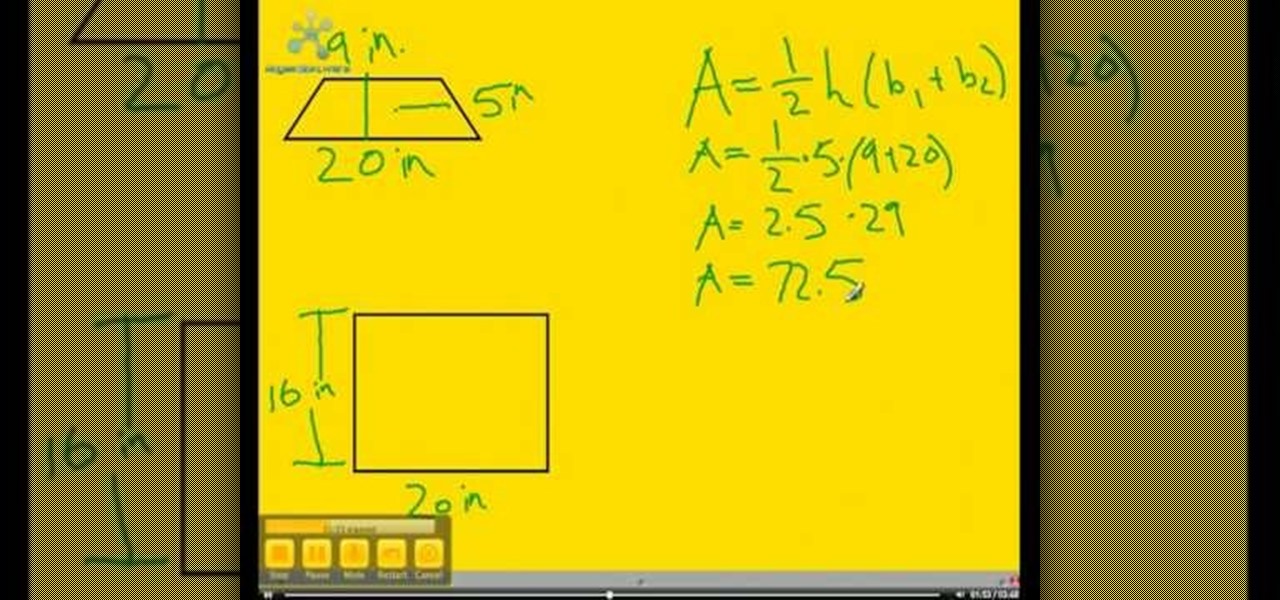
How To: Calculate the area of complex shapes
Watch this video to learn how to calculate the area inside complex figures--shapes composed of multiple smaller, simpler shapes. The first step is to break the shape into its simpler component shapes. Then, using the information you have about the large shape, find all information you can about the smaller ones: base, height, etc. Next, find the areas of the smaller component shapes. Finally, add the areas of each of the component shapes together to find the area of the complex shape. Now you...

How To: Make a maglev motor
Ian uses round magnets, pencil, clay and glass slide to work his magic science experiment. Magentic levitation is said to be a solution for energy costs of trains because it cuts down friction and creates what is mythically regarded as a perpetual energy motor. This is an interesting toy model of how the maglev trains and large scale generators work

News: I Can Guess Your Address Any Where in the World
mind blowing maths trick.

How To: Make a HHO hydrogen generator
Welcome to Green Power Science! In this video tutorial, you'll learn how to make a HHO hydrogen generator. This is a very simple hydrogen generator. Watch the end, for there are some cool ignitions. These is a great way to get cheap alternative power sources.

How To: Divide Any Number with 5 in Just a Few Seconds
Fast maths tricks!
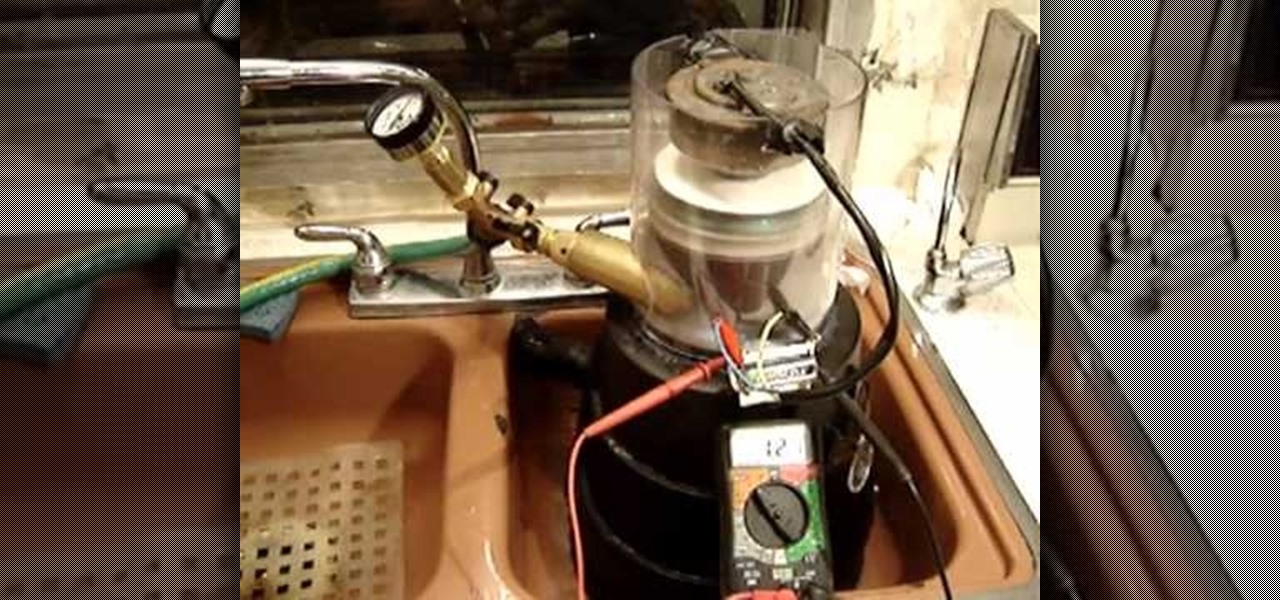
How To: Make hydro-electric power with a Tesla CD turbine
MrfixitRick shows how to make hydro-electric power using faucet water pressure, a Tesla CD Turbine, and a Subaru radiator fan motor.

How To: Solve mathematical functions and graphs
Check out this instructional math video that demonstrates how to calculate mathematical functions and graphs. In this 9th lesson, learn how to solve on SAT Algebra problems using the Official SAT Study Guide (as always). Here are the math problems and their page numbers that this video covers:

Brain Wash Trick: Guessing Your Phone Number & Age in One Minute
I will guess your phone number and age in one minute.
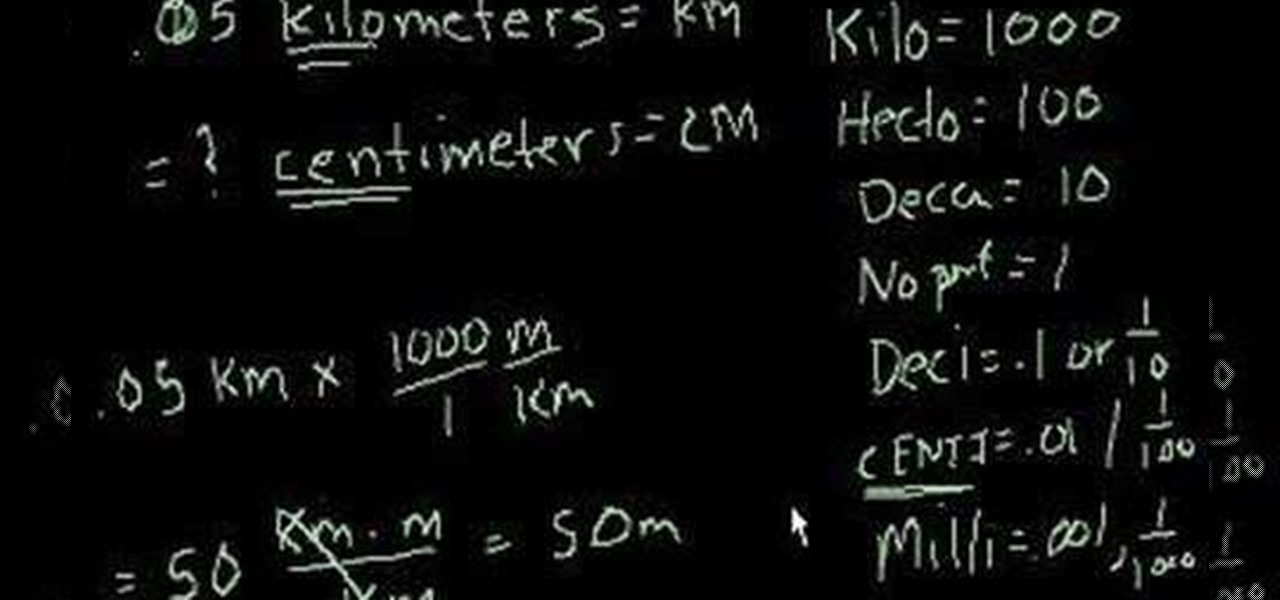
How To: Convert between metric units
Need help figuring out how to convert between the assorted metric units? From Ramanujan to calculus co-creator Gottfried Leibniz, many of the world's best and brightest mathematical minds have belonged to autodidacts. And, thanks to the Internet, it's easier than ever to follow in their footsteps (or just finish your homework or study for that next big test). With this installment from Internet pedagogical superstar Salman Khan's series of free math tutorials, you'll learn how to convert betw...
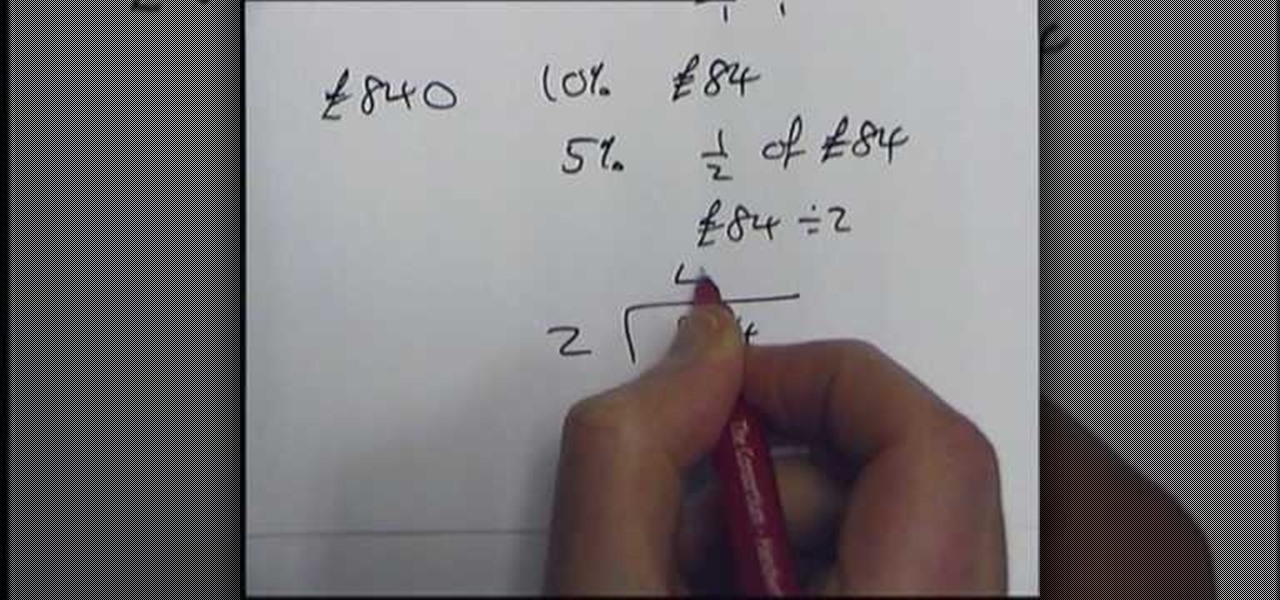
How To: Solve percentages without a calculator
Want to know how to find percentages quickly without the use of a calculator? It's easy. This free video math lesson will show you how it's done. From Ramanujan to calculus co-creator Gottfried Leibniz, many of the world's best and brightest mathematical minds have belonged to autodidacts. And, thanks to the Internet, it's easier than ever to follow in their footsteps (or just study for that next big test).
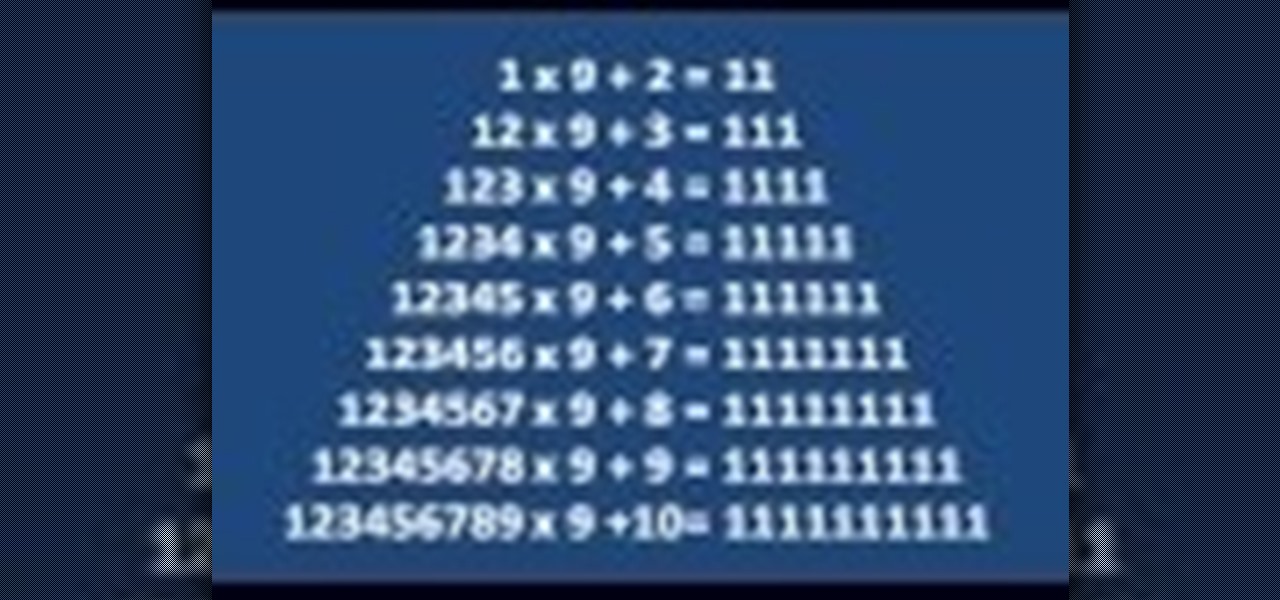
News: Beauty of Mathematics
beautiful mathematics .amazing shaped hills with numbers formed in multiplication.watch it and show it to the children and students to make them interesting on mathematics.
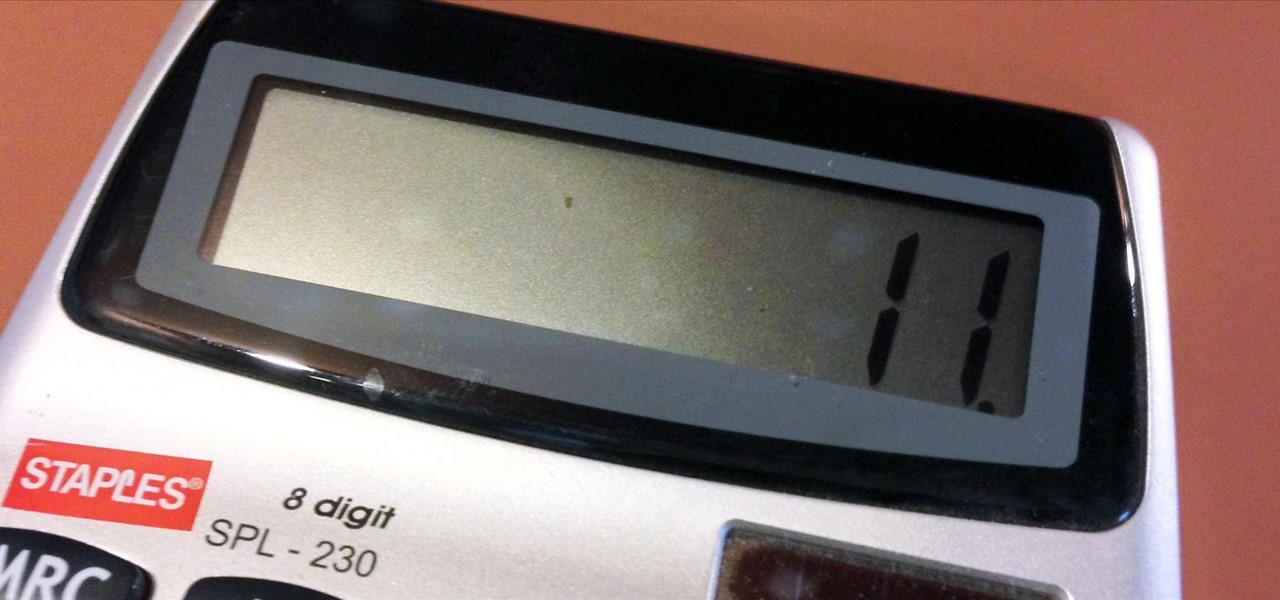
How To: Multiply Any Number by 11 with a Super Fast Mental Trick
Most of the time, when I’m bored during math class, I play with my calculator to satisfy my boredom. Recently, I've discovered that when multiplying any number by 11, 111, or any number similar to it, that it has a pattern (though I guess everything in math has a pattern). I don't know if this technique is original, because I didn't read anything about this. It's just mere observation. If it’s a tried and true technique, let me know.
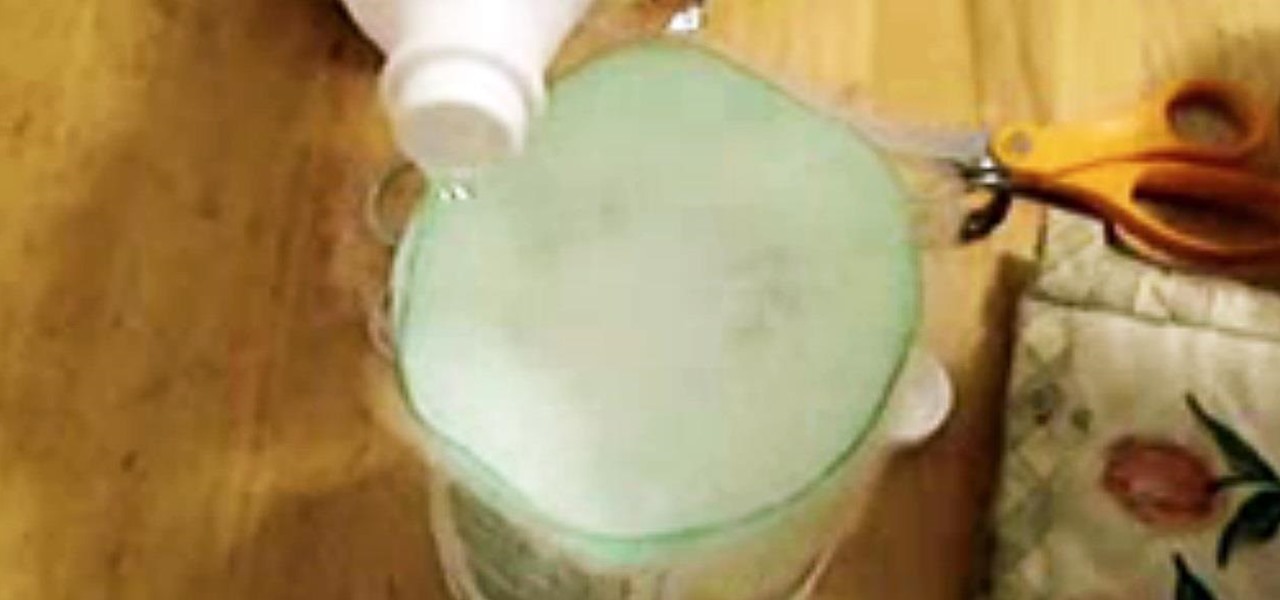
How To: Make Poor Man's Liquid Nitrogen
Can't get liquid nitrogen? Then make some yourself. Check out this instructional science video to learn how to make inexpensive liquid nitrogen. This tutorial video is great for science teachers, physics demonstrators, and science enthusiasts.

How To: Make Ocean in a Bottle - Super Cool Science Experiment
Cool Science Experiment with water and Cooking Oil.
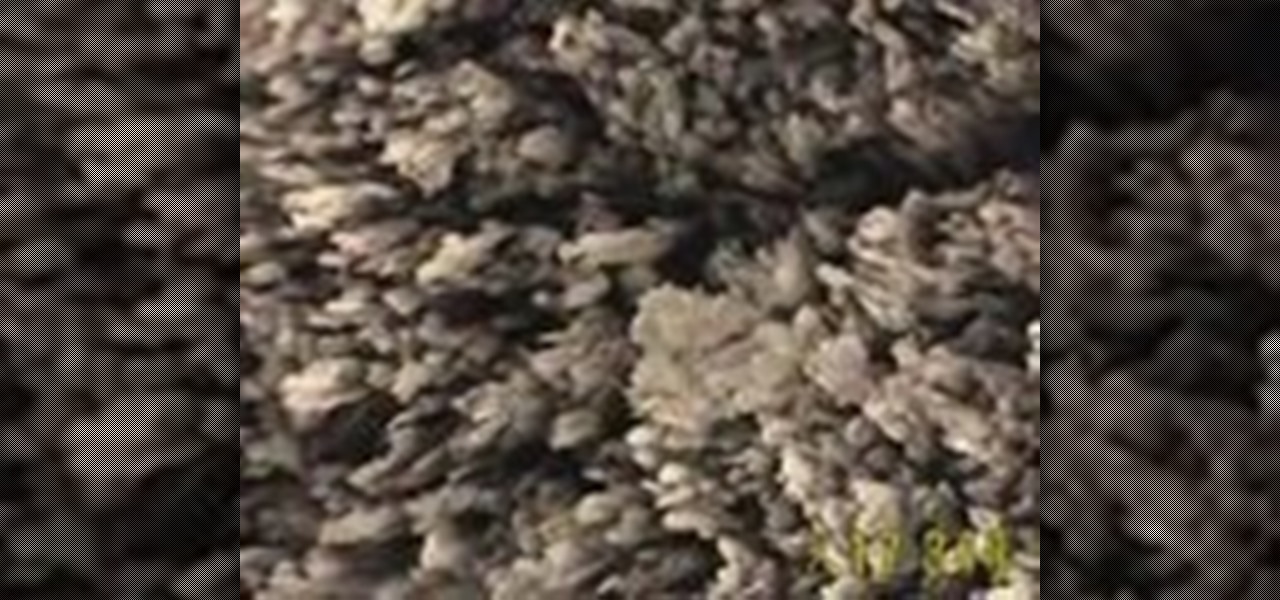
How To: Explore the atomic structure of a tooth
Infinitely zoom into a tooth to discover its atomic composition. Understand this incredible, visually stunning wonderment.
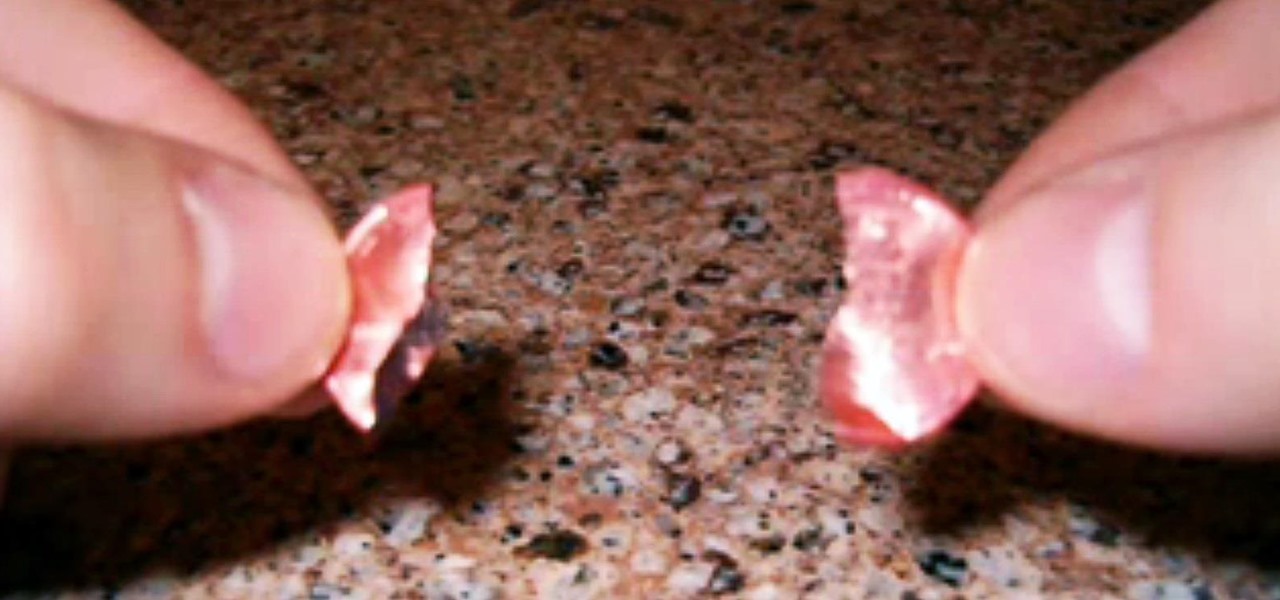
How To: Rip a Penny in Half
No, we're not lying. But before you try and tear a plain old penny in half, you should probably watch this video first or you may hurt your fingers. While ordinary pennies are very, very difficult to rip, if you get rid of the zinc core you are left with only the thin copper shell, which is itself very easy to tear apart.
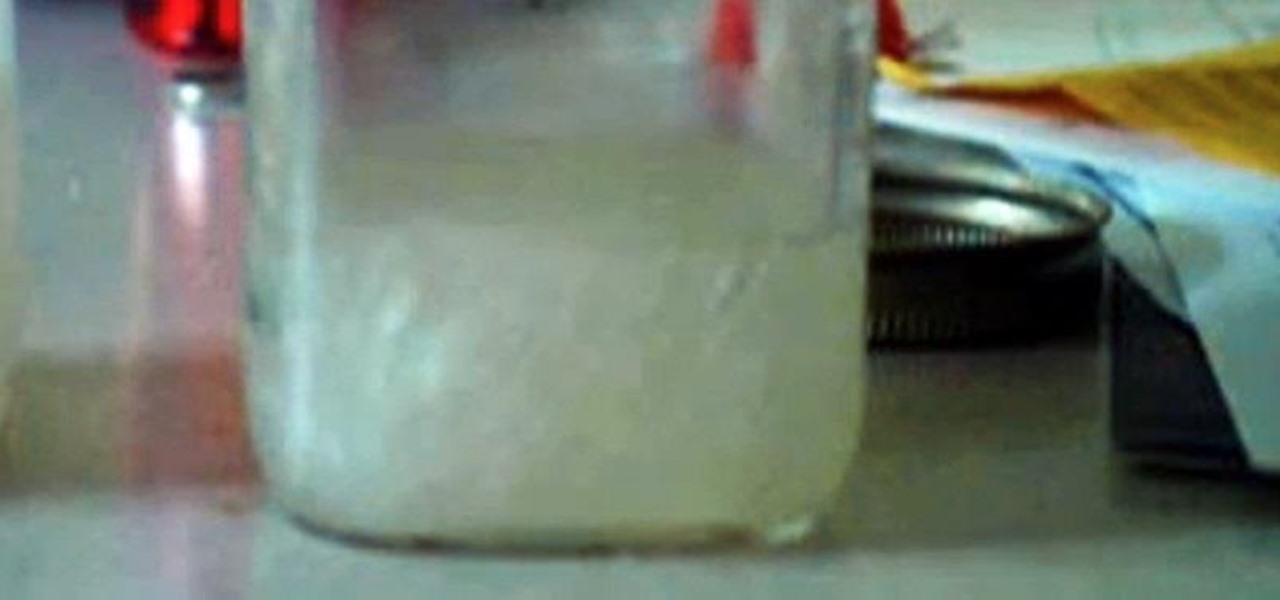
How To: Make "Hot Ice" with Sodium Acetate Crystals
If you've ever used a heating pad or hand warmer, you essentially know what "hot ice" is. It's supersaturated sodium acetate, and it's actually fairly easy to make at home out of sodium acetate crystals. You can also make it out of vinegar and baking soda (directions at the bottom of this article).

How To: Write a haiku
In this video, Robert will teach you how to write a Japanese poem called a haiku. First, you will learn a bit about what a haiku is, as well as its structure. A haiku is a poem with three lines: the first is five syllables long, the second is seven syllables long, and the third is five syllables long. You will learn that haikus can be about anything; there is no standard "rule" to follow involving what you write. It doesn't have to rhyme, and it can be about anything, even thoughts. During th...

Quantum Mechanics: Heisenberg's Uncertainty Principle Explained
Physics can be a real mind bender, but this educational video will show you how to wrap your head around Heisenberg's uncertainty principle. And no, that's not the same Heisenberg that's in Breaking Bad. We're talking about the famous German theoretical physicist Werner Heisenberg, someone whose work you'd be more likely to see in Fringe.

How To: The 5 Best Dry Ice Party Tricks & Pranks
There's no reason to wait for Halloween to play with dry ice. It definitely creates a creepy fog-like effect when you add a little water to it, but there are some other really cool things you can do wit dry ice. Here are just 5 non-Halloween ways to use dry ice for tricks or pranks.

How To: Make an acetylene explosion
A demonstration of the explosive potential of even a small amount of acetylene mixed with the right amount of oxygen. Watch to learn how to do this yourself. Make sure to wear goggles and stand at a safe distance when making your own acetylene explosion.

How To: Study
Learning Style What kind of learner are you? There are three different ways people learn:

How To: Make Copper Glow Red Hot with Acetone
In this video, I will show you how to make copper glow red hot with the catalytic oxidation of acetone. For this science experiment, we'll just need some acetone, copper wire, and a flame source to initially heat the copper coil we'll make.
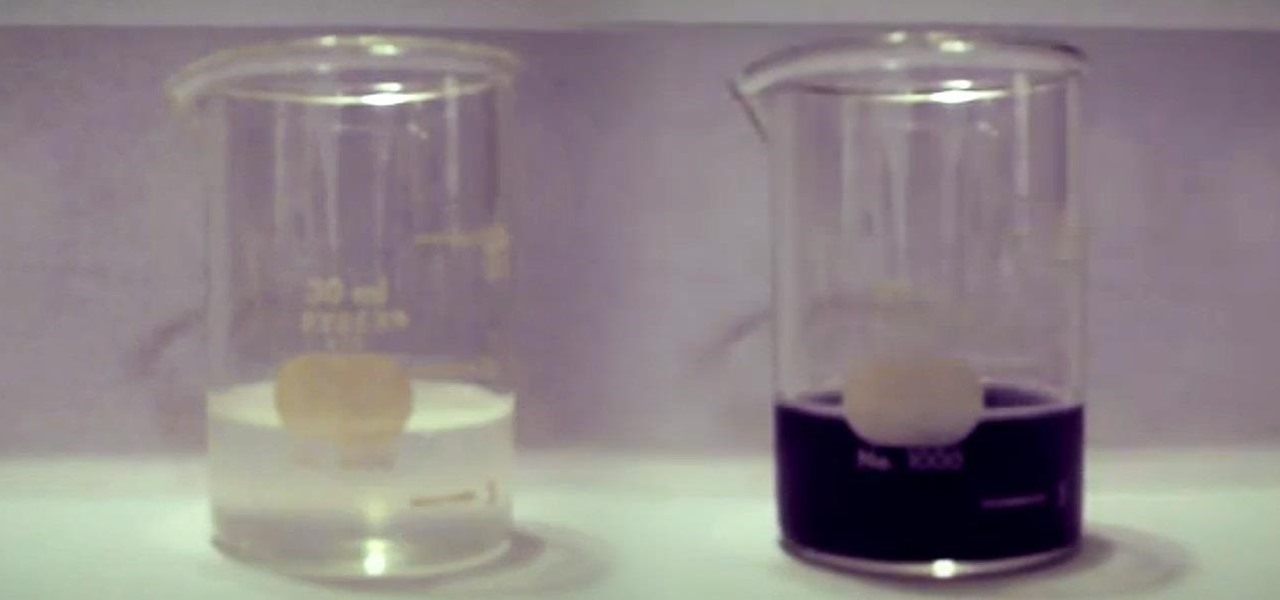
How To: Make an Iodine Clock Reaction at Home
In this video, I'll be demonstrating how anyone can make their own iodine clock reaction with simple over-the-counter chemicals.

How To: Make Pancake Syrup Turn Blue When You Shake It with This Color Changing Experiment
In this video, I will show you how to perform the color-changing, blue bottle experiment with common household products.
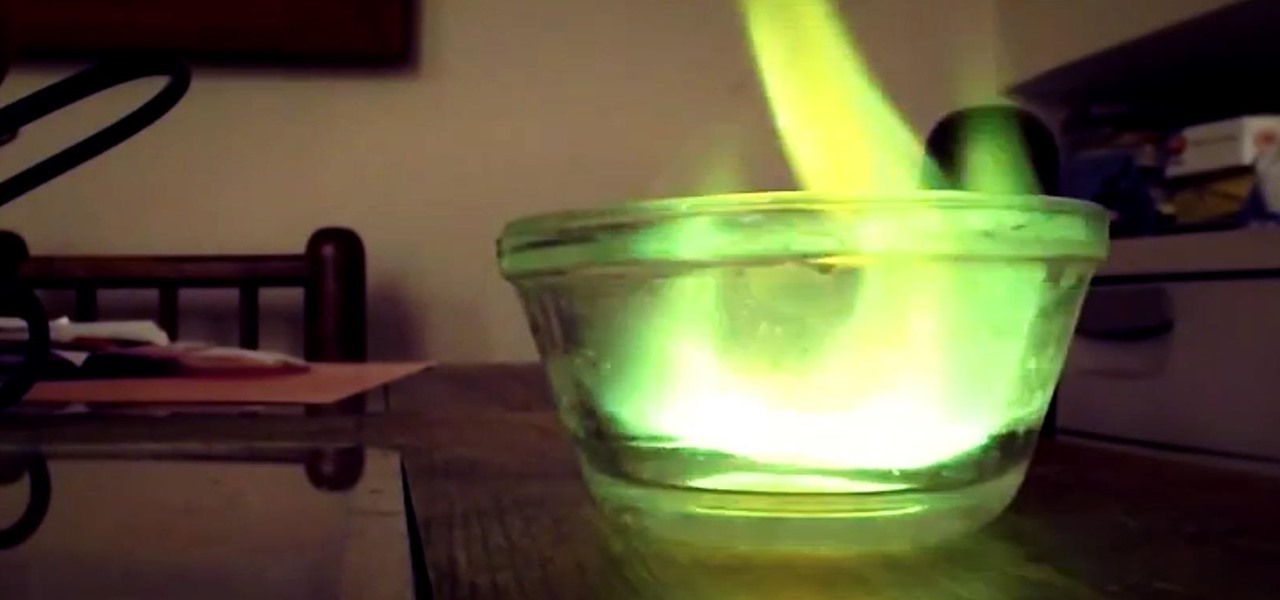
How To: Make Green Fire from Laundry Booster
In this guide, you'll learn how to make your own boric acid from borax and other common chemicals to produce a green flame when mixed with methanol.

How To: Find an LCM with the upside-down birthday cake method
Look for an easy way to find the least (or lowest) common multiple for a set of numbers? Like to think in pictures? Try the upside-down birthday cake method! Learn how with this free video lesson. From Ramanujan to calculus co-creator Gottfried Leibniz, many of the world's best and brightest mathematical minds have belonged to autodidacts. And, thanks to the Internet, it's easier than ever to follow in their footsteps (or just finish your homework or study for that next big test).

How To: Use Pattern Blocks Art in the Classroom
This HowTo is about using Pattern Blocks in the classroom. All you need is a classroom set of pattern blocks and a camera. Each student or group of students is given a set of pattern blocks and a time limit. The assignment: make an artwork that illustrates the concept of symmetry, small enough to fit on a single student desk. When the art is finished, take a photograph of it and then let the students vote to choose their favorites.







